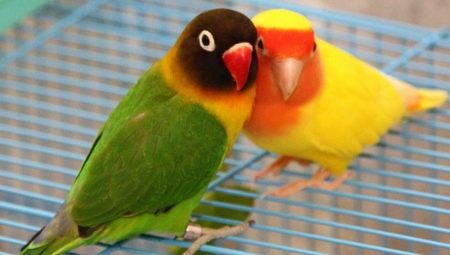Small colored birds often become pets. Lovebirds are unpretentious and beautiful, so they are chosen much more often than other parrots. Usually parrots are bought in pairs, but even a lonely bird can please the owner for long years. Before acquiring, you should definitely study the issue of life expectancy and all the factors that affect this.
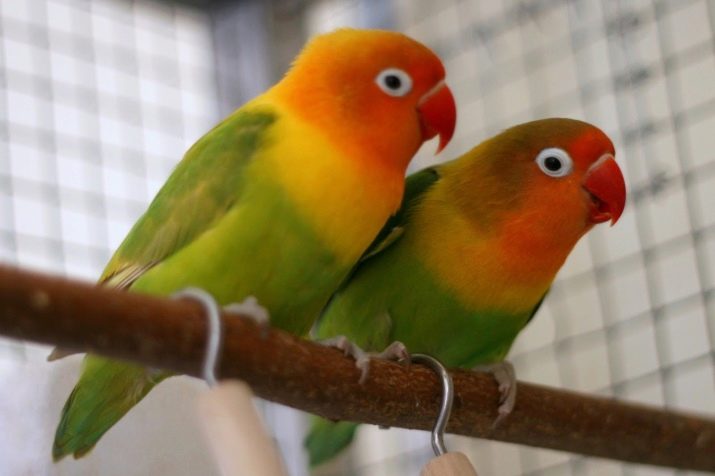
Life span
Lovebirds are one of the most common and popular parrots among small and medium breeds. Birds live both in the wild and at home. It is known that small parrots live less than their large counterparts.
The life of a lovebird is about 7-15 years. The exact numbers depend on many aspects, environmental characteristics and health status.
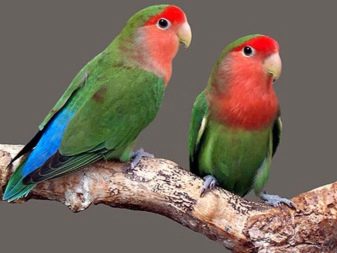

At home
Interesting cases are known when couples of lovebirds lived in captivity for about 20 years. This is quite possible with proper care and good health of lovebirds. Nevertheless, the average life of a parrot at home is 10 years. Several factors can lead to premature death.
- A variety of diseases. Ornithologists claim that birds are susceptible to many diseases. If you buy a lovebird from your own hands, while outwardly he looks healthy - this is not a guarantee. The disease may occur after the end of the incubation period.
- Inattention to the health of a parrot. At the first signs of the disease, the bird should be taken to the veterinarian urgently to check everything and, if necessary, carry out treatment. If only one parrot behaves atypically in a pair, then be sure to separate them, which will protect the lovebird partner from infection.
- Poisoning. If you do not change the parrot food and water for a long time, then mold and fungus begin to develop there. As a result of eating spoiled food, the parrot can be seriously poisoned. Remember, lovebirds love to chew on different things. The cause of poisoning can even be paint, which the parrot broke off with its beak from the rods of the cage.
- Improper nutrition. Lovebirds can eat any food, but their diet still needs to be closely monitored. Often a bird is something that harms its health.
- Dangerous household appliances in the access of a parrot. If you let the bird out of the cage, it will fly everywhere and gnaw everything. So, lovebirds can gnaw a live wire or drown in an open saucepan with soup.
- Birds need time to adapt to the environment in which they find themselves. The lovebird should get used to the arrangement of objects in your home. If you are moving something large, be sure to show it to the bird. A parrot can, by negligence, fly into an unfamiliar obstacle and crash.
- Open windows pose a great danger to the parrot. Even a tamed and obedient bird can fly out or fall out by negligence. This almost always leads to death, because the home lovebird cannot adapt to life in the wild.
- Fear. Lovebirds, like most parrots, are very shy. Intense experiences (anxiety, fright) can lead to sudden cardiac arrest. In this case, saving the lovebird is impossible.
- Other pets. Even if the cat and dog do not eat parrots, this does not mean that they are not a threat. Even in a friendly game, a large animal can hit a lovebird with its paw. The body of a parrot is quite fragile, it can die as a result of an injury.

In nature
Untamed lovebirds live much less than their home relatives. Rarely do they reach 10 years. The natural habitat is tropical Africa and Madagascar. The hot and humid climate in the area provides a varied diet and sufficient drinking water for lovebirds.
Wildlife carries many dangers and risks for small birds, which reduces the average life span. The causes of early death may be as follows:
- during periods of drought, it is difficult for small lovebirds to fly long distances to find water; to reduce the population, some farmers poison the water, even if the bird finds a drink, it is not a fact that it will not die from it;
- birds often plunder farm fields, so people destroy them as pests;
- rather severe fights for territory take place inside the species flock, as a result, injured individuals die;
- predator attacks - vultures, owls, owls and other large birds prey on lovebirds day and night.
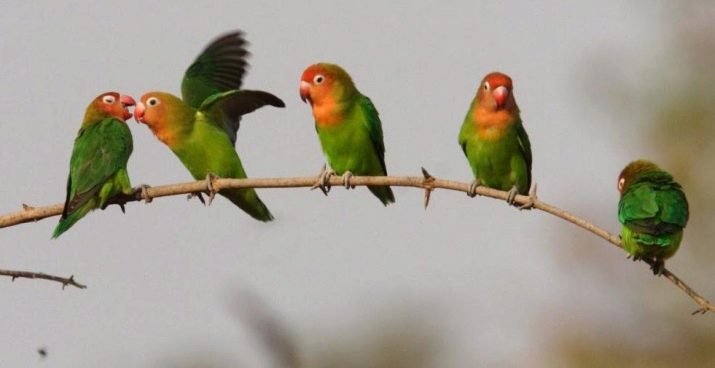
How many parrots live without a pair?
There is a belief that representatives of the species live only together, and otherwise - die from longing. Realities are more prosaic; a parrot can live without a couple.
With proper care, the lovebird will enjoy the company of the owner and will live the same 7-15 years as with a relative.
A lone bird needs much more attention. Lovebirds in a pair entertain each other. The owner must take this role upon himself.
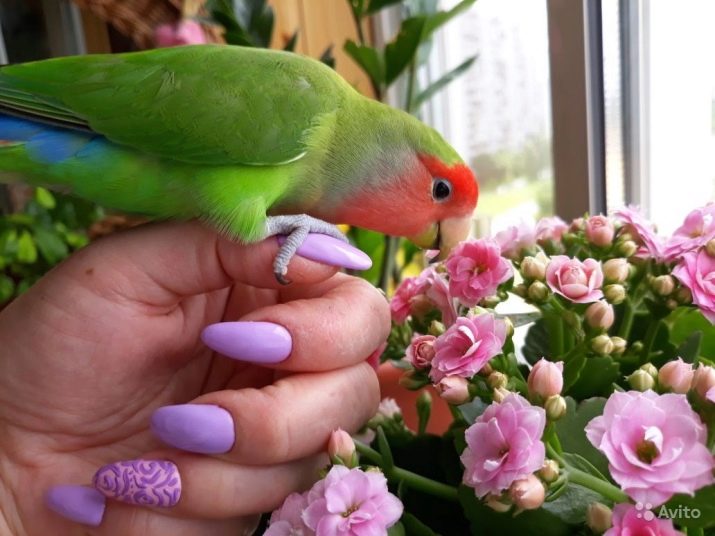
The first 2-3 days after you bring the bird into the house, you should not particularly touch it. The lovebird will be busy exploring new living conditions, but at the end of the adaptation period, be prepared to do everything together with the bird. Play and chat with the bird every day. It is worth playing not only in the cage, but also outside it. Let the lovebird fly around the room, but first completely protect her.
If the parrot is always in the cage, then its physical development will reverse, which can lead to early death.
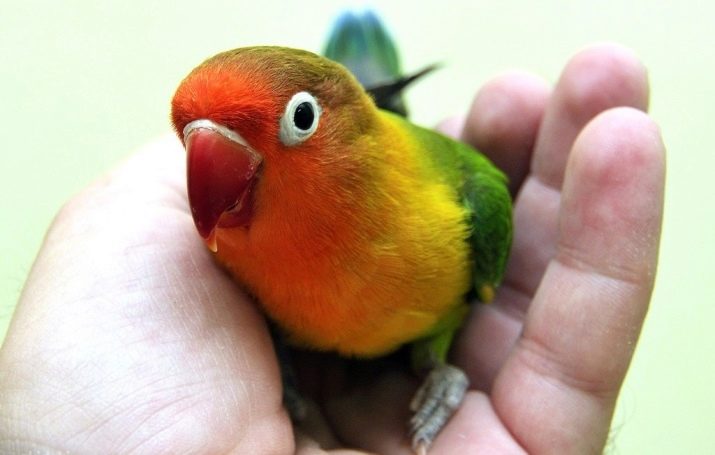
It is necessary to equip the cage with such toys as:
- swing;
- bells;
- ropes and ribbons;
- toys that rustle.
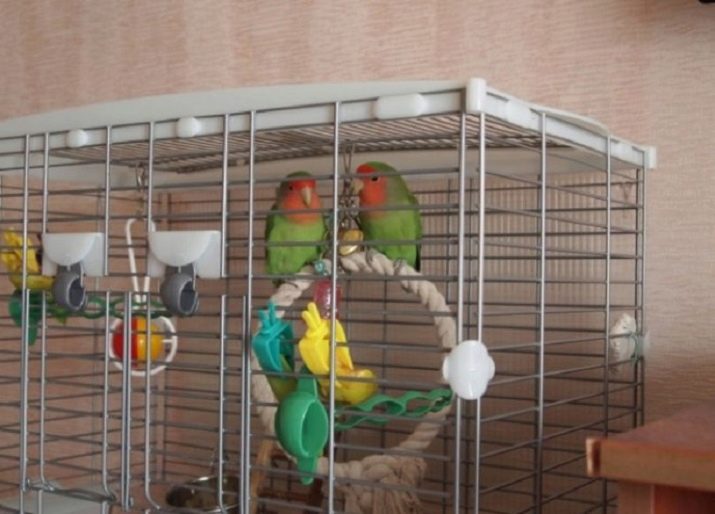
How to care?
Lovebirds are unpretentious, but still need comfortable and safe conditions. It is necessary to pay attention to the bird and give her care. It is worth following some care recommendations.
- The cell should be installed where there are no drafts. Take care of good lighting, no direct sunlight. Use artificial lighting only in the autumn-winter season, when there is very little natural light.
- The cell should not be placed near the battery so that the lovebirds do not overheat. Parrots are quite sociable and like to watch everything, so position their house at about the level of their eyes. So even a parrot without a couple will not feel lonely if you just stay in the same room with it.
- Keep the air temperature within + 18– + 25 ° С. The light in the room should be soft, otherwise the birds will be afraid of it. Lovebirds love to learn and explore new things. By the way, arrange curly, creeping flowers on the walls. Avoid poisonous plants.
- The main house of the parrot is the cage. It should be large and spacious, especially when it comes to a pair of lovebirds. Approximate parameters for one - 80x30x40 cm and for a pair - 100x40x50 cm. There should be enough space for a flight at least two wing flaps.
- Inside, install not only drinking bowls and feeders, perches, but also various toys. Avoid plastic products when arranging a cage. In pet stores even special edible toys for birds are sold. So you protect the pet from poisoning. You need to clean the bird house 1-3 times a week.
- For nutrition, use grain mixes for medium-sized parrots. Sift the purchased food before use. The lack of vitamins is compensated by fruits and vegetables, you can give nuts and sprouted wheat, oats. More often treat the bird with parsley and dandelion leaves. To make up the deficiency of minerals, give the bird chopped eggshells, but pre-heat them in a pan or boil them.
- The daily norm is 2-3 tsp. stern. Regular complementary foods can be added at the rate of 0.5 tsp. per individual. Overeating for lovebirds is quite dangerous, so you need to carefully monitor the diet.
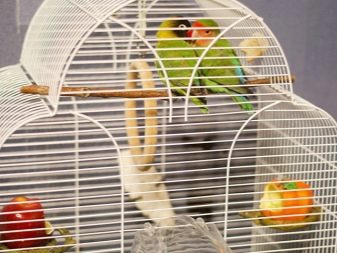
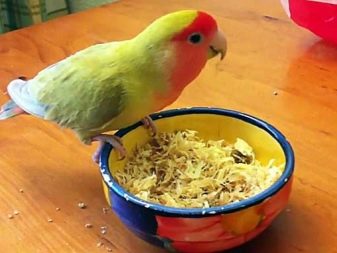
Lovebirds should not be given food such as:
- persimmon, mango, avocado, papaya;
- candied fruit;
- meat, fish, seafood;
- spicy food;
- fatty food;
- potatoes;
- seeds from fruit;
- branches
- garlic and onions.
With proper care and constant attention, lovebirds can live much longer than the average life. Do not leave the birds alone for a long time. After work, always let them out of the cage, communicate and play with the birds.
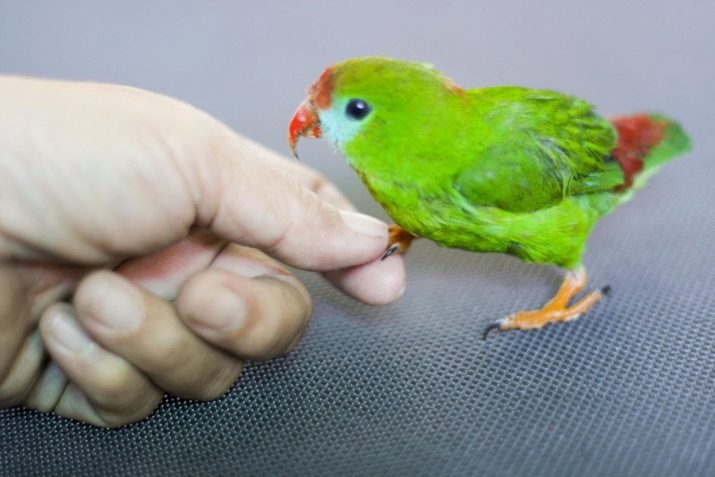
Lack of attention and communication is fatal for lovebirds.
For how many years lovebirds live, see the next video.
